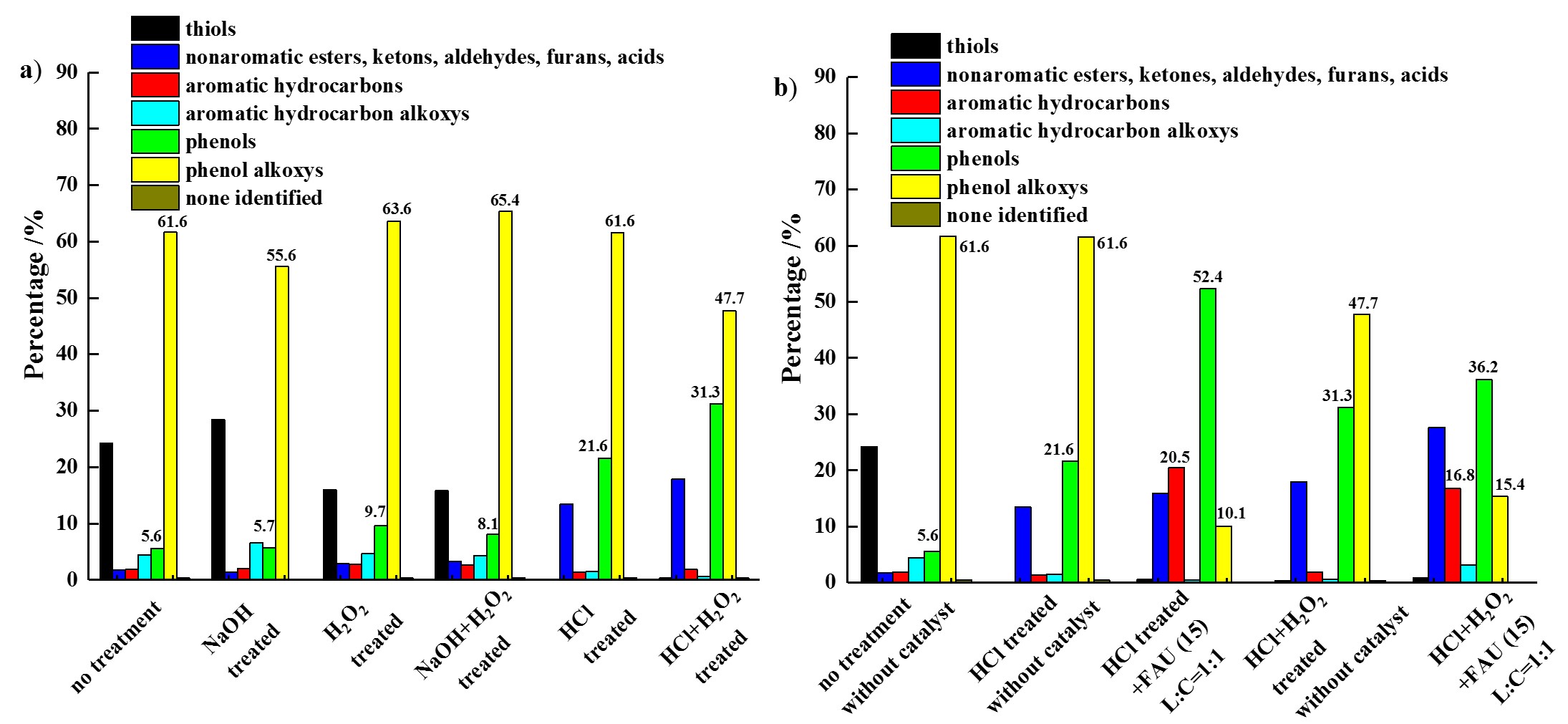Effect of pretreatment on the production of phenol from lignin by catalytic fast pyrolysis over zeolites
Lignin is a complex three-dimensional amorphous material, which contains methoxylated aromatic units with different linkages in the matrix.[1] By far, lignin is the most abundant renewable source and a potential sustainable candidate feedstock for aromatic chemicals.[2] Due to its complex structure and high thermal stability (high amount of C-C bond), the conversion of lignin is difficult.[3] Pretreatment of lignin is a potential way to reduce the amount of C-C bond and thus to increase the activity and selectivity to monomers, such as phenols.[4]

Figure 1: Effect of pretreatment on liquid product distribution (a) without zeolites (b) with FAU (15) zeolite. Pyrolysis conditions: 650 oC, 20 s, 20 oC/ms. In case of catalytic fast pyrolysis, pretreated lignin to catalyst weight ratio (L:C) = 1:1.[4]
The results present in this work show that simple pretreatment of lignin play an important role in catalytic fast pyrolysis, which significantly change the liquid product distribution. Especially after lignin pretreated with acid, such as hydrogen chloride, the production of phenols increased to a large extend. By choosing the proper pretreatment, catalyst and reaction conditions, a maximum selectivity to phenols (over 50 %) was obtained. Large pore zeolite (FAU) with medium Si/Al ratio (~15), medium catalyst-to-feed ratio (L:C=1:1), high pyrolysis temperature (650 oC) and heating rate (20 oC/ms), and long pyrolysis time (20 s) are essential to maximize the production of phenols from hydrogen chloride-treated Kraft lignin.
By chemically treating lignin, a more efficient conversion in catalytic fast pyrolysis can be achieved and higher yields of phenols can be obtained.
[1] J. Zakzeski, P. C. A. Bruijnincx, A. L. Jongerius and B. M. Weckhuysen, Chemical Reviews, 2010, 110, 3552-3599.
[2] F. G. Calvo-Flores and J. A. Dobado, ChemSusChem, 2010, 3, 1227-1235.
[3] Z. Ma, E. Troussard and J. A. van Bokhoven, Applied Catalysis A: General 2012, 423–424, 130-136.
[4] Z. Ma, A. Ghosh, N. Asthana and J. van Bokhoven, ChemCatChem, 2017, 9, 954-961.